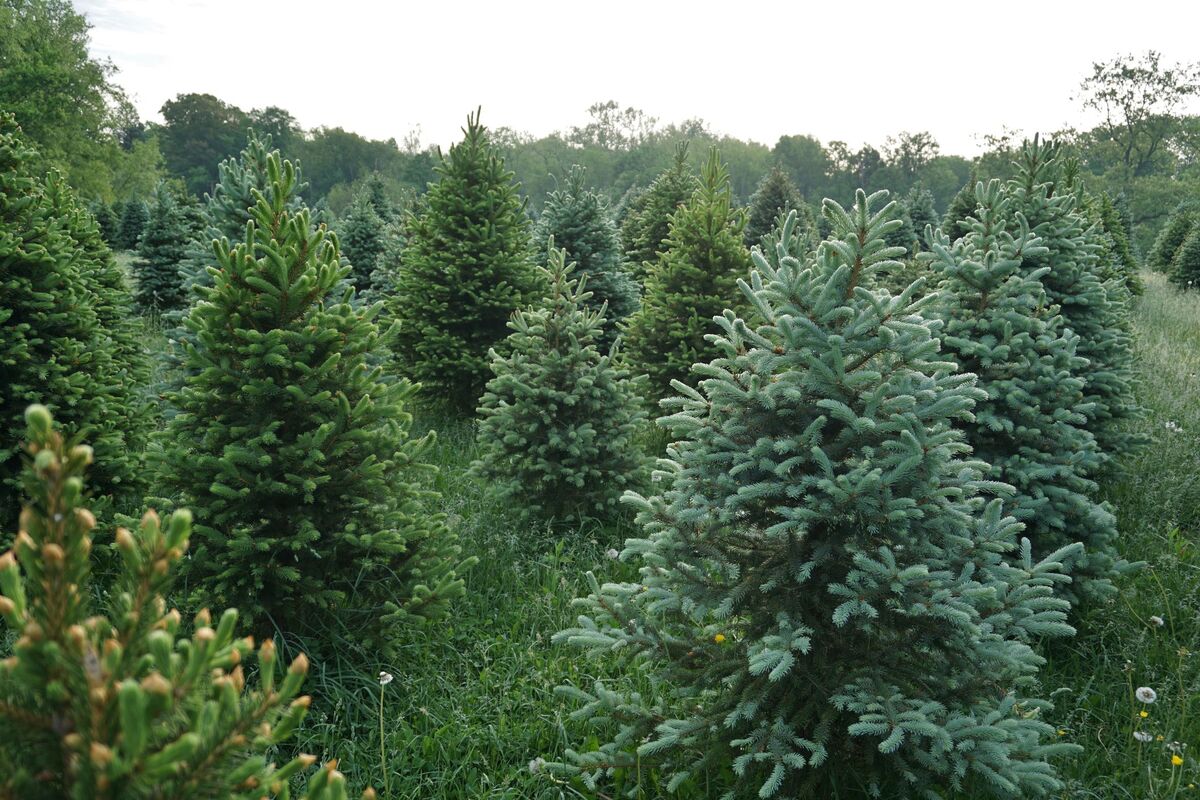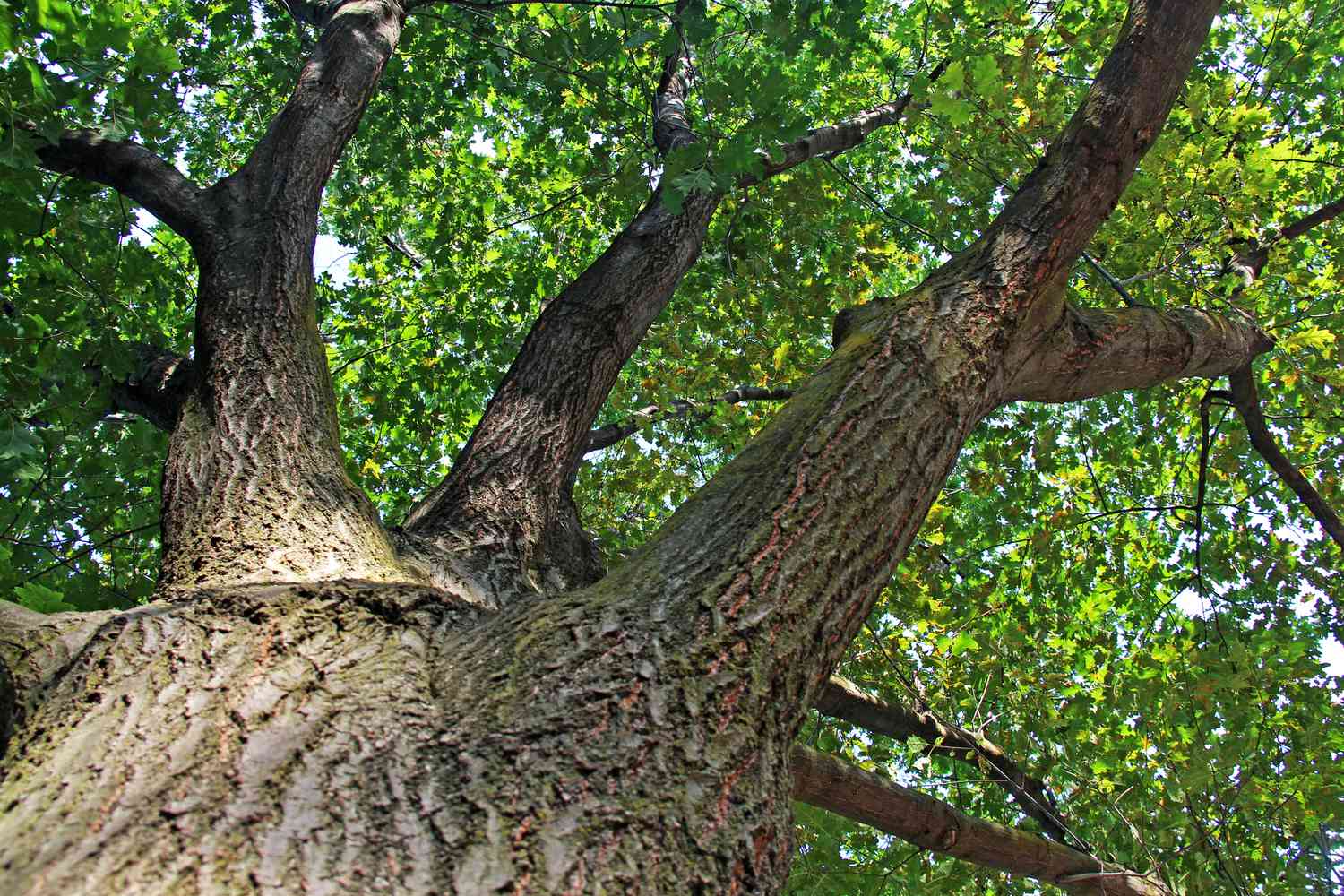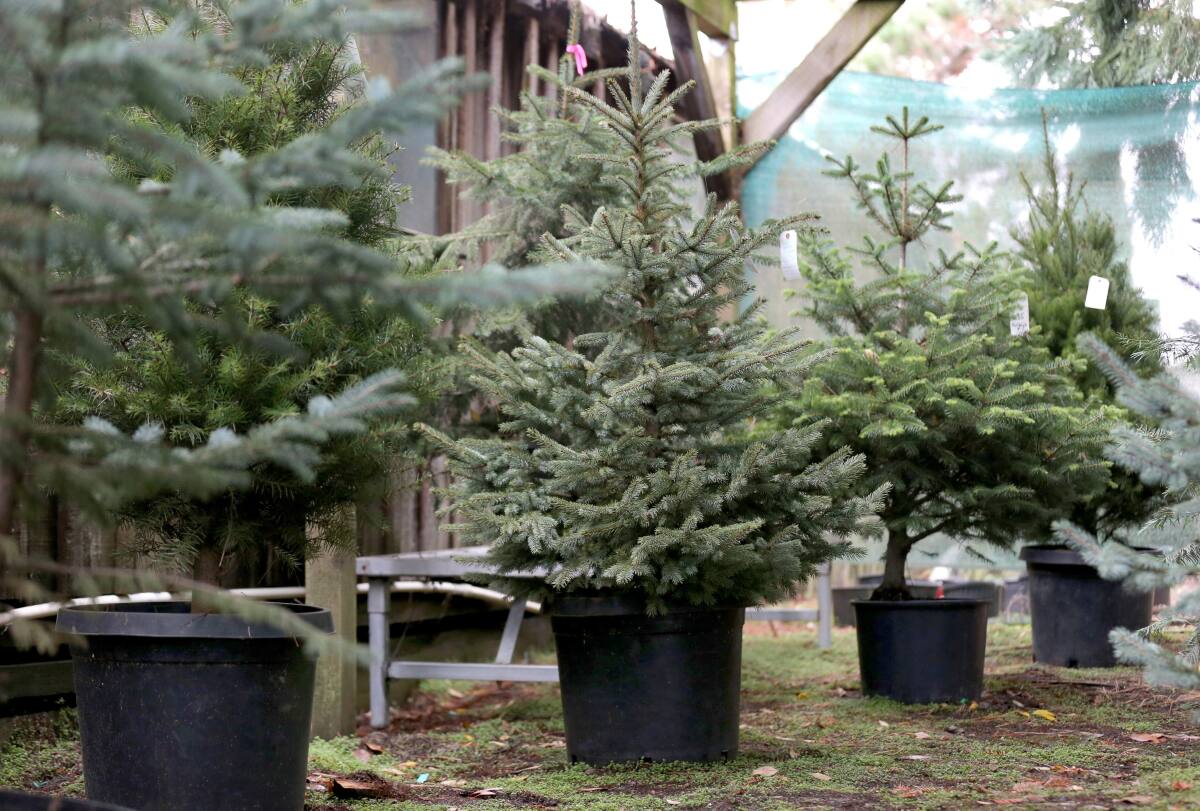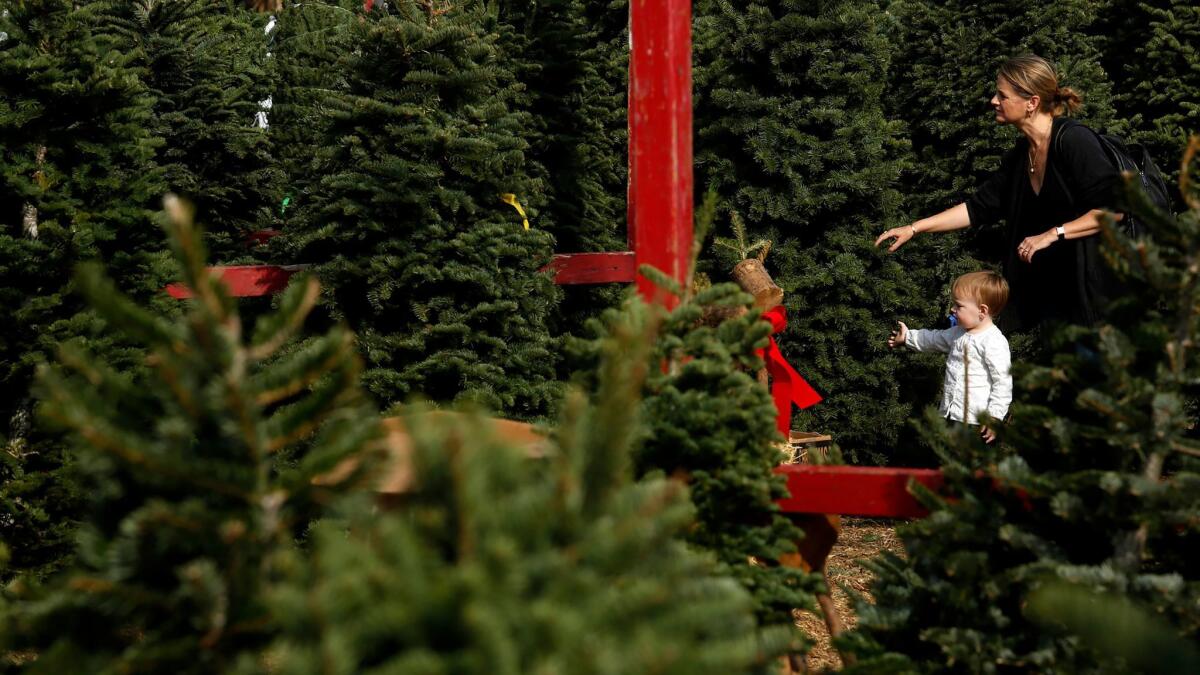Home>Gardening News and Trends>Latest News>Where Did Christmas Trees Come From


Latest News
Where Did Christmas Trees Come From
Modified: January 22, 2024
Discover the fascinating history of Christmas trees, their origins, and how they became an integral part of holiday traditions. Stay updated with the latest news on Christmas tree trends.
(Many of the links in this article redirect to a specific reviewed product. Your purchase of these products through affiliate links helps to generate commission for Chicagolandgardening.com, at no extra cost. Learn more)
Table of Contents
Introduction
Christmas is a magical time of year, filled with traditions and symbols that bring joy and warmth to our homes. One of the most beloved symbols of Christmas is the Christmas tree. Every December, millions of households around the world decorate a beautifully adorned tree, creating a festive centerpiece for their holiday celebrations. But have you ever wondered where this beloved tradition of having a Christmas tree originated?
The tradition of the Christmas tree can be traced back to ancient times, when people would decorate their homes and temples with evergreen branches as a symbol of life and renewal during the winter solstice. The use of evergreen plants during this time of year represented the hope that spring would return and bring new life to the world. These early precursors to the Christmas tree were not the grand, fully decorated trees that we see today, but rather simple arrangements of evergreen branches.
As Christianity spread throughout Europe, the tradition of decorating trees during the holiday season began to merge with Christian beliefs. Some sources suggest that the modern Christmas tree originated in Germany in the 16th century. Legend has it that in the 16th century, the Protestant reformer Martin Luther was walking home one evening and was struck by the beauty of stars twinkling through the branches of an evergreen tree. Inspired by this sight, he brought an evergreen tree into his home and decorated it with candles to recreate the magical scene he had witnessed.
Over time, the tradition of the Christmas tree gained popularity and spread throughout Europe. People began to decorate the trees with various ornaments, such as fruits, nuts, and candles. These early decorations were often handmade and carried special meaning. For example, apples were used to symbolize the forbidden fruit from the Garden of Eden, while candles represented the light of Christ.
The tradition of the Christmas tree made its way to the New World in the 18th century, brought by German immigrants settling in Pennsylvania. Initially, the Christmas tree was not widely embraced by the American population, as it was seen as a foreign custom. However, as more immigrants arrived and brought their traditions with them, the Christmas tree became more accepted and eventually became a cherished symbol of the holiday season in the United States.
Today, the Christmas tree is an integral part of our holiday celebrations. It serves as a focal point for family gatherings, a place to hang cherished ornaments, and a symbol of the joy and love that surrounds the holiday season. Whether it’s a real tree or an artificial one, the Christmas tree continues to bring a sense of magic and enchantment to our homes each year.
Ancient Origins
The origins of the Christmas tree can be traced back to ancient civilizations that celebrated the winter solstice, the shortest day of the year. During this time, people would gather evergreen branches and bring them into their homes as a symbol of life and hope during the cold and dark winter months.
In ancient Egypt, palm branches were brought indoors to celebrate the winter solstice and the return of the sun god Ra. The Romans, too, had a tradition of celebrating the winter solstice with evergreen branches, which they adorned with candles to symbolize the return of light and life.
In Northern Europe, the ancient Norsemen revered the evergreen tree as a symbol of fertility and rebirth. They believed that the gods resided in the trees, and would bring a live tree into their homes during the winter solstice to honor the gods and ensure a bountiful harvest in the coming year.
As Christianity spread throughout Europe, many of these pagan traditions were incorporated into Christmas celebrations. The Christmas tree, with its connection to the winter solstice and the everlasting nature of evergreen plants, became a symbol of Christ’s enduring love and the hope of eternal life.
The first recorded use of decorated trees during the Christmas season can be found in early 16th-century Germany. Pine trees were decorated with fruits, nuts, and paper flowers, and were brought into homes to celebrate the holiday season. These early Christmas trees were often accompanied by Nativity scenes and other religious decorations.
One popular legend traces the origin of the Christmas tree to the Protestant reformer Martin Luther. According to the legend, Luther was walking home one winter evening and was struck by the beauty of stars twinkling through the branches of an evergreen tree. Inspired by this sight, he brought an evergreen tree into his home and decorated it with candles to recreate the magical scene he had witnessed.
Regardless of its true origins, the tradition of the Christmas tree spread rapidly throughout Germany and eventually throughout Europe. It became a popular custom among both the nobility and the common people, with trees being decorated with candles, fruits, nuts, and small toys.
While initially a German tradition, the Christmas tree gained wider acceptance in other European countries during the 18th and 19th centuries, thanks in part to the influence of Queen Victoria and Prince Albert, who popularized the Christmas tree in England. The couple was depicted in a popular magazine standing around a decorated Christmas tree in 1848, sparking a trend that quickly spread throughout the British Empire and beyond.
The tradition of the Christmas tree continues to be an enduring symbol of the holiday season, connecting us to our ancient roots and reminding us of the hope and joy that this festive time of year brings.
The Renaissance and Beyond
During the Renaissance period, the popularity of the Christmas tree continued to grow, particularly in Germany and surrounding regions. The trees were adorned with a variety of colorful decorations, such as apples, nuts, and sweets. These decorations were often symbolic, representing the bounty of the harvest and the sweetness of life.
The tradition of the Christmas tree during the Renaissance period was not limited to private homes. It also made its way into public spaces, with trees being decorated in town squares and marketplaces. The sight of a beautifully decorated Christmas tree brought a sense of joy and festivity to the community.
The popularity of the Christmas tree reached new heights during the 19th century. With advances in transportation and the growth of urban areas, trees became more accessible to people from all walks of life. The industrial revolution also played a role in the spread of the Christmas tree, as mass production made ornaments and decorations more affordable and readily available.
In the Victorian era, the Christmas tree became a central part of holiday celebrations. Queen Victoria and Prince Albert, known for their love of Christmas festivities, were often depicted in newspapers and magazines with their elaborately decorated trees. The royal endorsement of the Christmas tree further solidified its place as a cherished tradition.
During this time, the decorations on Christmas trees became more elaborate and ornate. Glass ornaments, tinsel, and candles became popular additions to the tree. The trees were often adorned with delicate hand-blown glass baubles, intricate garlands, and shining fairy lights. The Christmas tree became a symbol of wealth and status, as families competed to display the grandest and most extravagant trees.
As European immigrants began to settle in the United States, they brought their traditions and customs with them, including the Christmas tree. The first recorded instance of a decorated Christmas tree in America was in 1747 in Pennsylvania, brought by German settlers. However, the Christmas tree did not gain widespread acceptance in the U.S. until the mid-19th century.
With the rise of mass media and the increased popularity of Christmas as a holiday, the Christmas tree became a staple of American households. The trees were decorated with an assortment of ornaments, ranging from handmade crafts to store-bought trinkets. Families would gather around the tree on Christmas Eve or Christmas morning to exchange gifts and spend time together, creating memories that would last a lifetime.
Today, the tradition of the Christmas tree continues to evolve. Artificial trees have become a popular alternative to traditional live trees, as they offer convenience and can be reused year after year. The decorations have also evolved, with a wide range of styles and themes available to suit every taste.
Whether simple or extravagant, real or artificial, the Christmas tree remains a cherished symbol of the holiday season. It is a visual representation of the joy, love, and togetherness that define this special time of year.
The Tradition Spreads to the New World
The tradition of the Christmas tree made its way to the New World in the 18th century, carried by German immigrants who settled in Pennsylvania. These immigrants brought with them their cherished customs and traditions, including the decorating of Christmas trees.
Initially, the Christmas tree was not widely embraced by the American population. It was seen as a foreign custom and was met with skepticism and resistance. In fact, there were even laws in some states that prohibited the display of Christmas trees, as they were seen as symbols of pagan rituals.
However, as more German immigrants arrived in America, bringing their traditions with them, the Christmas tree gained more acceptance. It slowly began to spread beyond German communities and into the wider American society.
The turning point for the Christmas tree in America came in 1846 when Queen Victoria and Prince Albert of England were depicted in the Illustrated London News standing around a decorated Christmas tree. The image caught the attention of the American public and sparked a renewed interest in the tradition.
Shortly after, in 1851, a popular women’s magazine, Godey’s Lady’s Book, featured a full-page illustration of a Christmas tree adorned with ornaments and presents. This further popularized the Christmas tree in America and helped to cement it as a cherished symbol of the holiday season.
By the late 19th century, the Christmas tree became a common sight in American homes during the holiday season. Trees were decorated with homemade ornaments, popcorn strings, and handmade paper chains. It became a tradition for families to gather around the tree on Christmas Eve to exchange gifts, sing carols, and create lasting memories.
The commercialization of Christmas in the early 20th century further fueled the popularity of the Christmas tree. Department stores began to showcase elaborately decorated trees in their windows, attracting crowds of shoppers. The use of electric lights on trees also became more widespread, replacing the traditional candles and making the trees more dazzling and safer to display.
Today, the Christmas tree remains a beloved symbol of the holiday season in the United States. Families continue the tradition of decorating a tree, often with a mix of cherished heirloom ornaments and new additions. The trees are adorned with twinkling lights, colorful baubles, and an array of unique decorations that reflect each family’s style and personality.
The tradition of the Christmas tree, brought to the New World by German immigrants, has found its place in American culture and continues to be a timeless symbol of the joy and togetherness that define the holiday season.
The Christmas Tree Today
Today, the Christmas tree has become an integral part of our holiday celebrations. It is a cherished tradition that brings families together and adds a touch of magic and wonder to the holiday season.
The Christmas tree has evolved over time, with a wide variety of options available to suit every preference and style. Many families still opt for the classic tradition of a real, live tree, carefully selecting the perfect one from a local tree farm or market. The experience of choosing and cutting down a tree has become a cherished family outing, creating memories that will be treasured for years to come.
For those seeking convenience, artificial trees have gained popularity. These trees are designed to closely resemble real trees and offer the advantage of being reusable year after year. They come in a range of shapes, sizes, and even colors, allowing for endless options when it comes to decorating.
Decorating the Christmas tree has become an art form in itself. Families gather to carefully hang ornaments collected over the years, each holding a special meaning or memory. The tree is adorned with twinkling lights, garlands, tinsel, and bows, creating a festive display that captivates both children and adults alike.
In recent years, themed trees have become a popular trend. Families choose a specific theme or color scheme, ensuring a cohesive and visually stunning tree. From traditional themes, such as red and green with classic ornaments, to more unique themes, like coastal or rustic, the possibilities are endless.
The Christmas tree is not just limited to private homes. It can be found in churches, schools, shopping malls, and public spaces, spreading the holiday spirit to all who pass by. Tree lighting ceremonies have become a beloved tradition, with communities coming together to witness the illumination of a grand, towering tree in the town square.
The tradition of the Christmas tree has also embraced eco-friendly practices. Many households now opt for LED lights, which consume less energy than traditional bulbs. Additionally, there are initiatives to recycle real trees after the holiday season to be repurposed as mulch or compost.
While the holiday season is filled with many cherished traditions, the Christmas tree stands as a symbol of love, joy, and unity. It serves as a reminder of the beauty and magic that can be found in the simplest of things. Whether it’s a grand, glittering centerpiece or a humble tree adorned with handmade ornaments, the Christmas tree continues to bring warmth and happiness to homes around the world.
Conclusion
The Christmas tree is a beloved symbol of the holiday season, bringing joy, tradition, and a touch of magic into our homes. From its ancient origins as a simple arrangement of evergreen branches to the grand and elaborately decorated trees of today, the Christmas tree has evolved over time, crossing borders and cultures to become a universal symbol of love, hope, and togetherness.
Through the centuries, the tradition of the Christmas tree has transformed and adapted, while still retaining its core symbolism. From ancient civilizations celebrating the winter solstice to the merging of pagan and Christian beliefs during the Renaissance, the Christmas tree has always represented life, renewal, and the promise of a brighter future.
The Christmas tree found its way to the New World through the perseverance of German immigrants, who brought their cherished customs with them. Initially met with resistance, the Christmas tree gained acceptance and became an integral part of American holiday celebrations, thanks to the influence of Queen Victoria and Prince Albert and the growing commercialization of Christmas.
Today, the Christmas tree continues to be a cherished tradition, celebrated in homes, churches, and public spaces around the world. Families gather to decorate their trees, creating memories and traditions that will be passed down through generations. The Christmas tree is a symbol of joy, love, and unity, bringing people together during the holiday season.
Whether it’s a real tree carefully chosen from a local farm or an artificial tree that can be enjoyed year after year, the Christmas tree holds a special place in our hearts. It is a visual representation of the magic and spirit of Christmas, reminding us to embrace the joy and beauty of this festive time of year.
As the lights twinkle and the ornaments glisten, the Christmas tree stands as a beacon of hope and a symbol of the enduring traditions that bring comfort and happiness to our lives. It represents the eternal cycle of life and the promise of new beginnings. So, as we gather around our Christmas trees each year, let us embrace the joy, love, and togetherness they symbolize, and let the spirit of Christmas fill our hearts and homes.










